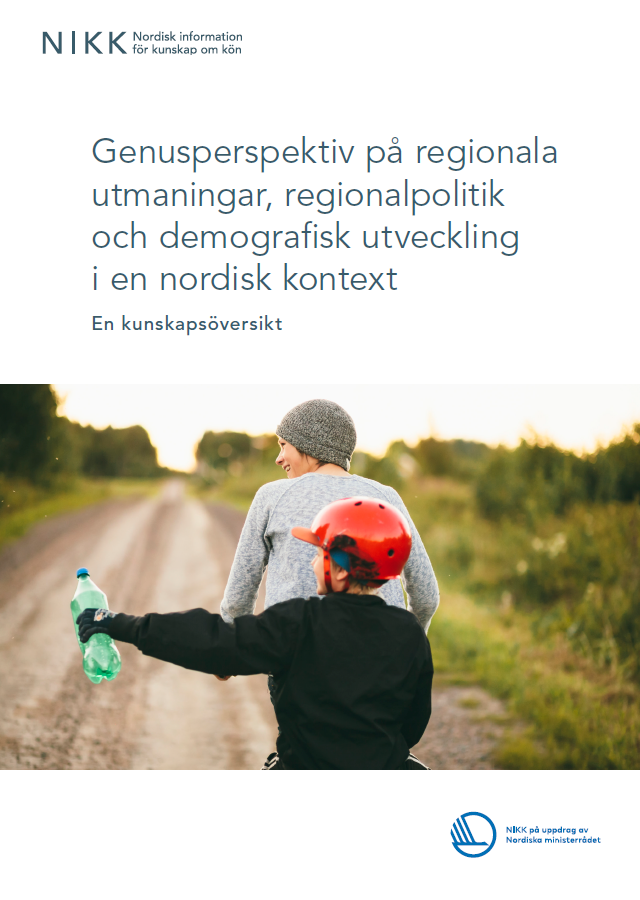The population structure in the Nordic region is changing. An ageing population, migration and urbanisation are leading to challenges for both the labour market and the welfare state in general. Many of the problems and solutions highlighted in this area can impact negatively on regional development as well as gender equality if they are implemented without having been analysed from a gender perspective. This has been shown in a new Nordic research overview.
The purpose of the research overview Gender perspective on regional challenges, regional policy and demographic trends in a Nordic context was to bring together knowledge at an overarching level on demographic trends in the Nordic countries, the challenges associated with these trends, and to highlight in particular the application and importance of the gender perspective to these issues. These challenges exist throughout the Nordic region, but are marked by regional conditions and differences between rural and urban areas. That is why this research overview has a particular focus on regional development and policy issues related to demography and urbanisation. Questions within the theme concern mobility, commuting, supply strategies and regional development strategies for example. The data has been drawn from both policy documents and research.
Policy documents and research
This research overview examines how gender equality has been included as a goal in regional policy in the Nordic countries, but also how depictions of the problems are understood and how solutions are presented. The review of policy documents from the gender perspective shows that both problems and solutions are largely ungendered, or gender-blind. This means that the policies fail to acknowledge that women and men have different experiences and circumstances, and that the problem descriptions and proposed solutions could have different effects on men and women.
Gender-blindness is problematic because patterns of movement, education level, demographic trends and the labour market are areas that are most closely intertwined with gender. It is also problematic because women and men are affected differently by economic and social policies. All in all, the overview shows that regional policy and development require a holistic approach.
“This overview does not answer questions about how best to guide policy, but would like to point out that the gender and gender equality perspectives need to be given more emphasis in national policies. Responsibility for implementing national policy has increasingly been placed on local actors. This makes clear guidance on what goals are to be achieved even more important,” says Lena Grip, PhD in Cultural Geography at Karlstad University, who produced the research overview.
Research about regional development and policy issues related to demography and urbanisation/centralisation in the Nordic countries is a broad area of knowledge. Much of the research in this field is concerned with the challenges in rural, peripheral and sparsely populated areas – from a national perspective and from the experiences of the regions themselves.
The research overview presents specific research that highlights how these issues are intertwined with gender. One example is the issue of more commuting, which is seen as a way of solving the problem of matching people to jobs in rural areas and the need for specialist skills in the labour market. Research highlights the fact that there is no problematisation of who is to commute and what challenges this presents for family and private life.
“There is also a need for further research in order to gain a greater understanding of how regional development is related to gender, demography, and centralisation trends,” says Lena Grip.
The research overview presents a number of suggestions for questions that could be taken up in future research (see fact box). The research overview was produced by Lena Grip on behalf of Nordic Information on Gender (NIKK). NIKK is a co-operation body under the Nordic Council of Ministers, located at the Swedish Secretariat for Gender Research at the University of Gothenburg.

